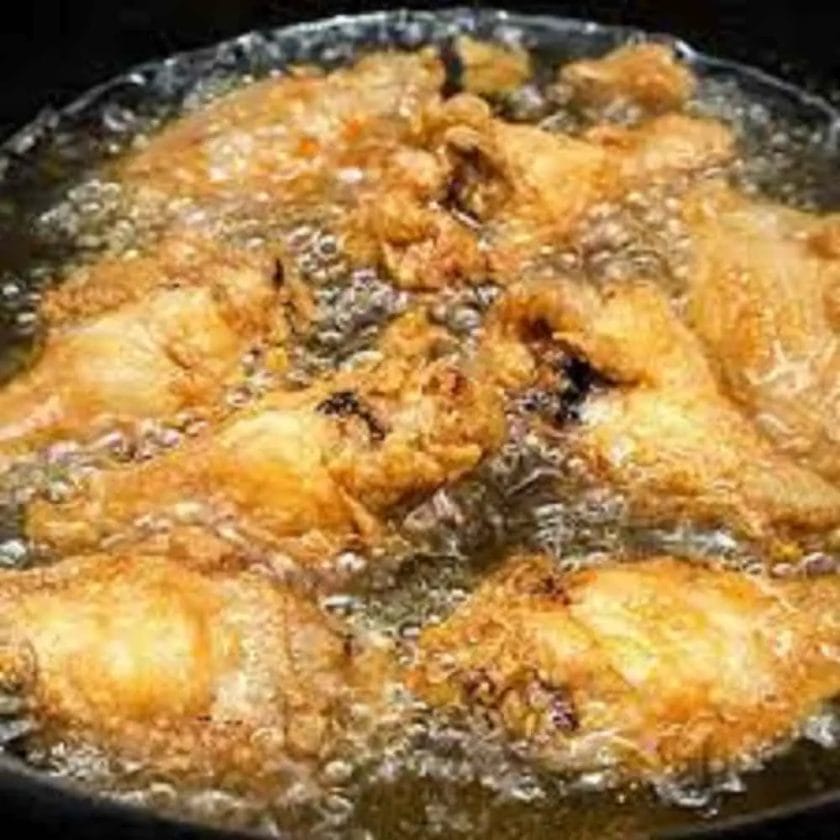Food preparation is an integral part of the dining experience, and it is essential to understand the various processes involved in cooking and serving food to the public.
One common question that most people ask is whether restaurants fry chicken and fish in the same oil. In this article, we will take an in-depth look at this topic to provide an answer to the question and understand why this practice is used in food preparation.
The Risks of Reusing Cooking Oil
Reusing cooking oil poses several risks to the public’s health, including contamination of flavors, bacterial growth, and increased levels of harmful compounds.
When cooking oils are reused several times, they break down and release impurities that can change the taste and smell of the food being fried.
This can be especially noticeable when cooking different foods, such as chicken and fish, which have distinct flavors and aromas.
Additionally, the reuse of cooking oils can also lead to the growth of bacteria, which can cause foodborne illnesses. The longer the oil is used, the more likely it is to contain harmful bacteria that can make people sick.
Furthermore, cooking oils that have been reused multiple times contain increased levels of harmful compounds, such as trans fats, which can have negative impacts on people’s health.

Health and Safety Regulations for Restaurants
To mitigate these risks, health and safety standards have been established to regulate the use of cooking oils in restaurants.
These guidelines dictate how oils should be stored, handled, and used to ensure the safety and hygiene of the food being served to the public.
Restaurants are required to follow these regulations, and failure to do so can result in penalties and legal consequences.It is essential that restaurants adhere to these regulations, not just for the sake of avoiding penalties, but also to protect the public’s health.
The use of clean, fresh cooking oils is crucial in reducing the risks of foodborne illnesses and ensuring that food is prepared in a safe and hygienic manner.
The Use of Separate Oils for Different Foods
To minimize the risks associated with reusing cooking oils, some restaurants choose to use separate oils for different foods.
This approach ensures that the flavors and aromas of each food item are not contaminated, and it reduces the chances of cross-contamination and the spread of bacteria.
For example, a restaurant may use one oil for frying chicken and a separate oil for frying fish.
Using separate oils for different foods can also improve the quality and taste of the food being served. Each food item has its own unique flavor and aroma, and using a separate oil for each can help to preserve these characteristics, resulting in better-tasting food.
The Use of Filtration and Oil Management Systems
Another way to reduce the risks associated with reusing cooking oils is to use filtration and oil management systems. These systems filter and clean the cooking oil, removing impurities and extending its life.
They also help to reduce the formation of harmful compounds and ensure that the oil remains fresh and safe to use.
Filtration and oil management systems play a crucial role in maintaining hygiene and safety in the kitchen. They help to reduce the risk of foodborne illnesses and ensure that the food being served is safe and hygienic.
Furthermore, they can also help to save money, as they extend the life of the cooking oil and reduce the need for frequent oil replacements.

Conclusion
In conclusion, the use of cooking oils in food preparation is a critical aspect of the dining experience, and it is essential to understand the risks, regulations, and alternatives involved. Reusing cooking oils poses several risks to public health, including contamination of flavors, bacterial growth, and increased levels of harmful compounds.
To mitigate these risks, health and safety regulations have been established to regulate the use of cooking oils in restaurants.
Restaurants can also choose to use separate oils for different foods, or use filtration and oil management systems to ensure the safety and quality of the food being served.
Ensuring responsible food preparation practices is crucial for protecting public health and enhancing the overall dining experience.
Can reusing cooking oil cause food poisoning?
Yes, reusing cooking oil for an extended period can increase the risk of food poisoning. The longer the oil is used, the more likely it is to contain harmful bacteria that can make people sick.
To reduce the risk of foodborne illnesses, it’s important to follow health and safety regulations and use fresh, clean oil for cooking.
Is it safe to reuse cooking oil if it is filtered?
While filtering cooking oil can help to remove impurities and extend its life, it is still not recommended to reuse oil for an extended period. Over time, even filtered oil can break down and release harmful compounds that can impact health.
To ensure the safety and quality of food, it’s best to follow health and safety regulations and use fresh, clean oil for cooking.
Is it necessary for restaurants to use separate oils for different foods?
No, it is not necessary for restaurants to use separate oils for different foods. However, using separate oils can reduce the risk of cross-contamination and help to preserve the unique flavors and aromas of each food item.
This can result in better-tasting food and reduced risk of foodborne illnesses.
Can filtration and oil management systems save money for restaurants?
Yes, filtration and oil management systems can help to save money for restaurants by extending the life of cooking oil and reducing the need for frequent oil replacements. These systems can also help to improve the safety and quality of food, which can ultimately enhance the overall dining experience.
Are there any alternative cooking methods to frying with oil?
Yes, there are alternative cooking methods to frying with oil, including baking, grilling, roasting, and sautéing. These methods can help to reduce the use of oil and lower the risk of harmful compounds and bacteria.
Some restaurants may choose to offer alternative cooking options to their customers, and it’s important to educate consumers on the health benefits of these options.

